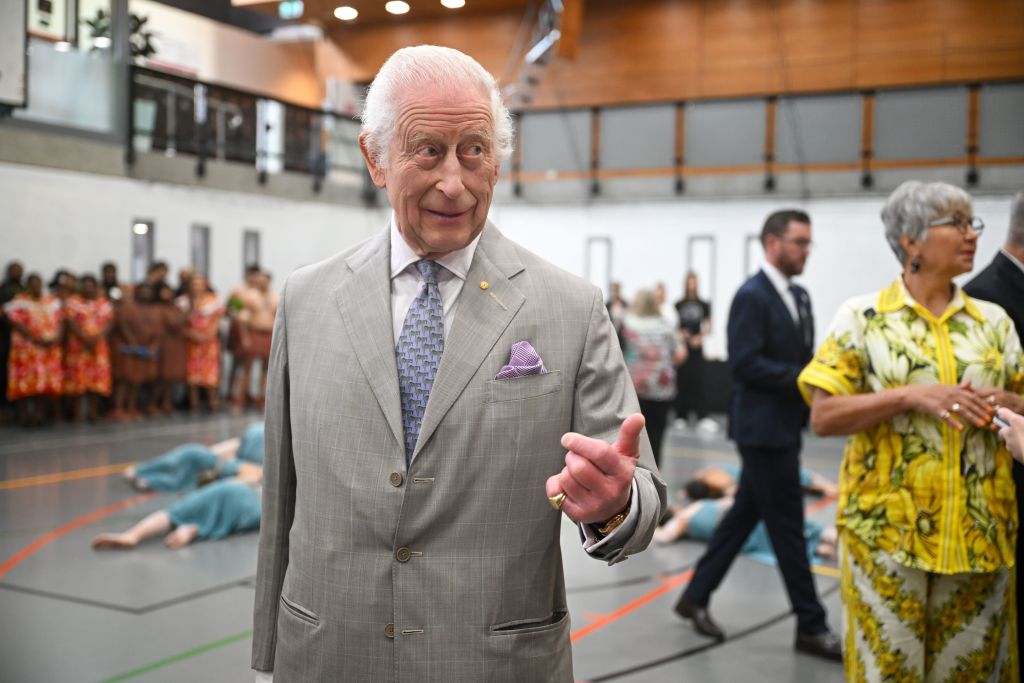Samoa is a land of sunburnt shorelines and majestic waterfalls. It is a Pacific paradise that, in a perfect world, should be left unsullied by the geopolitical machinations of larger states. But despite its small population and remote location, it is playing host – alongside other island nations scattered across the South Pacific – to an intensifying tussle for power and influence.
China has entered the fray with force, forging strong ties with local governments. Britain ought to view its ascension in the region with concern. It must now return to a corner of the world it has long neglected and do more to support its regional allies. The Commonwealth Heads of Government Meeting – set to be held in Samoa this week, with King Charles in attendance – provides the perfect platform for Britain to launch a new Pacific push.
Britain must step up its game
Britain, backed by its naval predominance, was once the prevailing power across the South Pacific. Vestiges of its presence persist in the Westminster and common law systems that many island nations inherited. In Samoa, signs of erstwhile British influence are ubiquitous, even if it was never under London’s control. Villa Vailima – which sits majestically above the nation’s capital – was home to Robert Louis Stevenson, who chronicled Samoa’s political crises in the late nineteenth century.
Most of Britain’s South Pacific colonies gained independence in the 1970s. London’s Pacific policy in the decades since can be summarised in two words: striking absence. Britain, following America’s lead, left Australia and New Zealand – key regional allies – to ‘shoulder the main burden’. Maintaining a South Pacific presence was simply unconscionable when threats closer to home, as the Cold War progressed, were far more acute.
And so Britain, once the presiding power, became a peripheral player. Macmillan’s Wind of Change developed into a category five cyclone and blew Britannia right out of the Pacific. But the winds have changed again, and Canberra and Wellington are now facing stiff competition from an increasingly assertive Beijing.
Why is the Chinese dragon so bedazzled by the pearls of the South Seas? One reason is that the region is replete with natural resources that fuel China’s growth. Another is that it remains a diplomatic stronghold for Taiwan, with three countries continuing to recognise Taipei as the legitimate legatee of the One China principle. Most importantly, China seeks regional preponderance as Sino-Western competition heightens. Expanding its sphere of influence is an important component of its evolving grand strategy.
Beijing is employing shrewd economic, diplomatic, and military statecraft in its Pacific push. It has developed considerable commercial stakes across the region and pursued chequebook diplomacy. In Samoa itself, China’s presence is visible everywhere, from its hulking diplomatic compound nestled near Villa Vailima to the myriad of construction projects that adorn the streets of the nation’s capital.
China’s presence is a great boon to some local economies, but its engagement is not entirely beneficent. It has poured tens of millions of dollars into political slush funds. It has left some countries in substantial debt. And it has sought to erode trust in traditional partners and western media. What has spooked Australia the most is Beijing’s conspicuous push to establish a permanent military presence in the region, despite avowals of peace and prosperity from Chinese apparatchiks. A naval base could soon lie unnervingly close to Antipodean shores.
Canberra and Wellington have boosted their engagement with their neighbours in response. Washington and Paris – which still retains its South Pacific collectivities, hankering after Gallic fantasies of continued Great Power status – have ratcheted up their presence, too.
Britain must now do the same. It has already made some progress with the launch of its Pacific Uplift policy in 2019, which reinforces London’s strategic shift to the Indo-Pacific and complements the Aukus defence pact. A seasoned diplomat oversees the new High Commission in Samoa, a lonely but important posting. Two Royal Navy patrol vessels now permanently traverse the Pacific. And London makes key contributions to regional climate-ocean governance and has increased its aid, too.
But Britain must go further. As King Charles presides over the biennial Commonwealth summit this week in Samoa, Britain should make an emphatic declaration of its commitment to a region it has long forsaken. The Foreign Office, many will argue, is hopelessly overstretched to expand its engagement with far-flung locales. But given the outsized importance of these small island nations, the marginal geostrategic benefit of minor diplomatic investment is substantial.
Britain must do more to engage on its own terms and help Australia and New Zealand plug the gaps they have not addressed. This engagement must be grounded on partnerships – and not paternalism – that respect local articulations of agency. There are many avenues for Britain to pursue, from banking services and infrastructure financing to climate-related visa programs and telecommunications development to joint maritime patrols and the expansion of British Army recruitment initiatives beyond Fiji. An enlarged British presence in the South Pacific could play a consequential role in countering China’s rising power.
It is time for this distant but vital region – a crucible of this century’s defining challenges – to puncture the political consciousness in Westminster and Whitehall. As the tussle for influence intensifies in paradise, Britain must step up its game and support its allies.







Comments